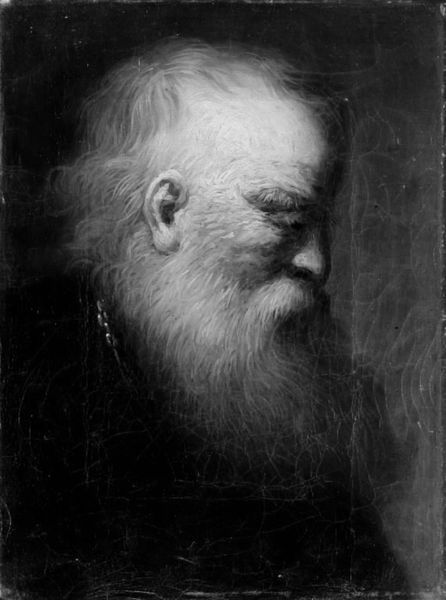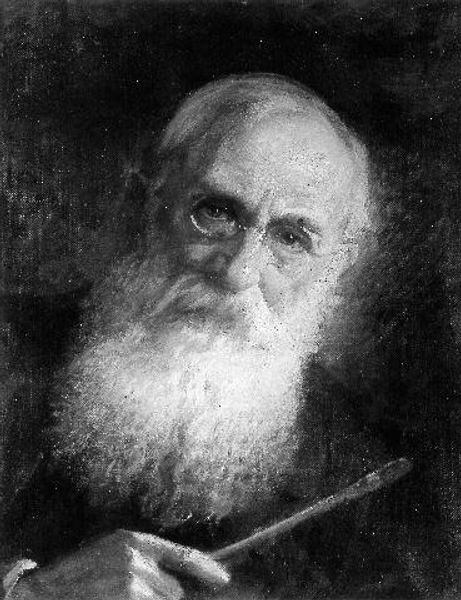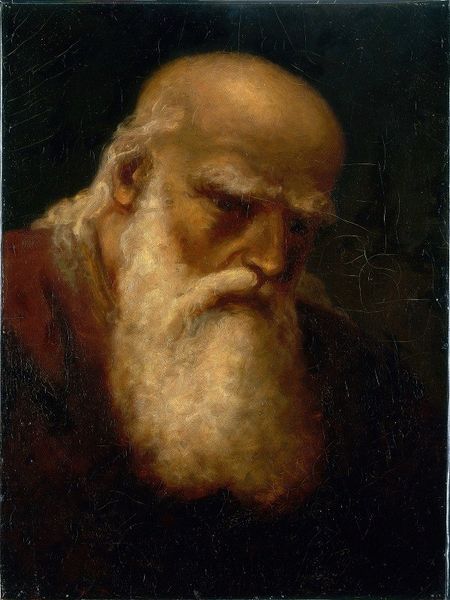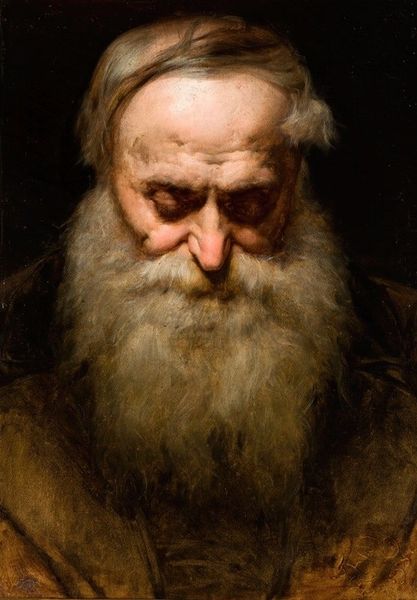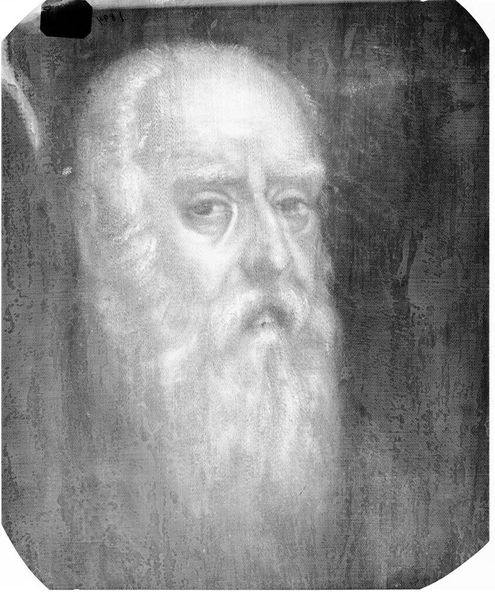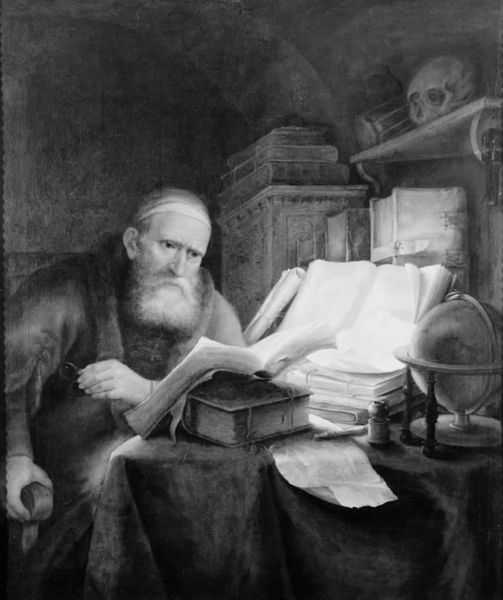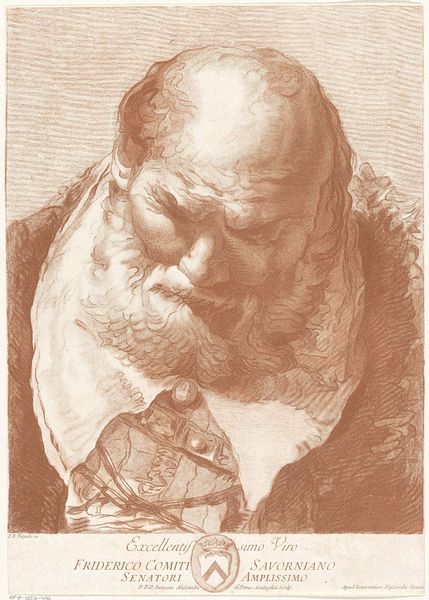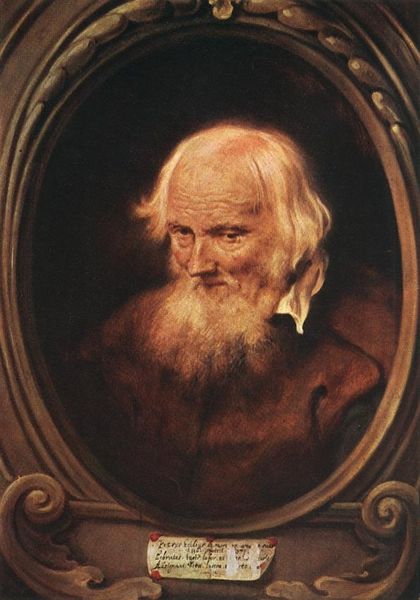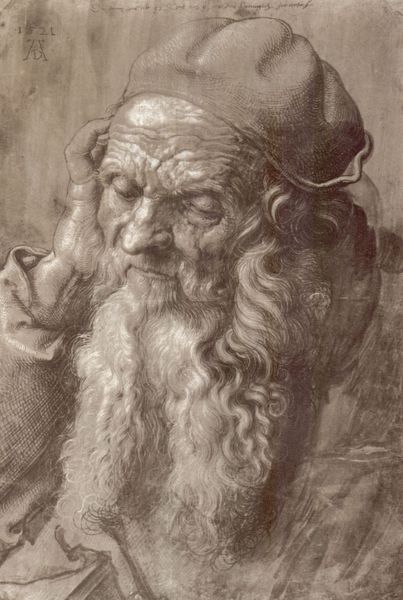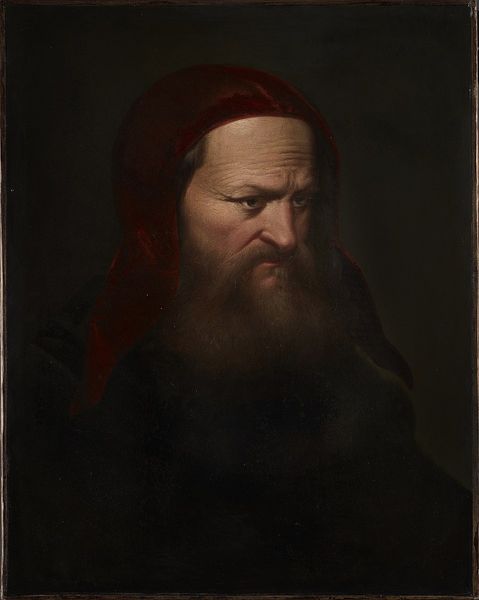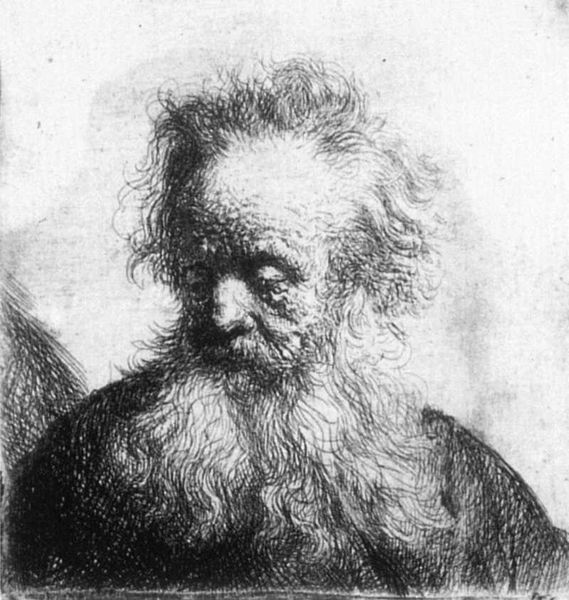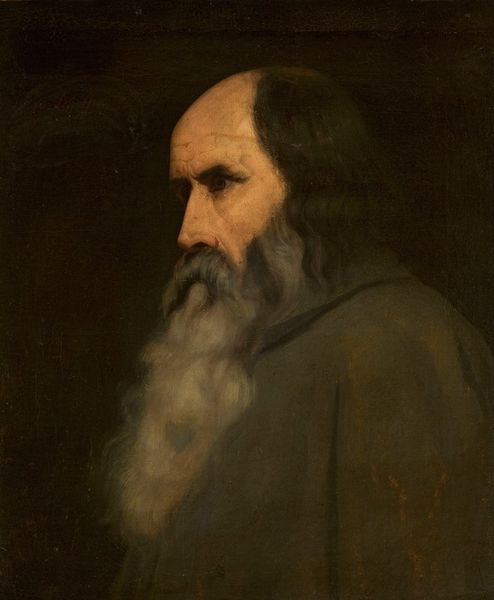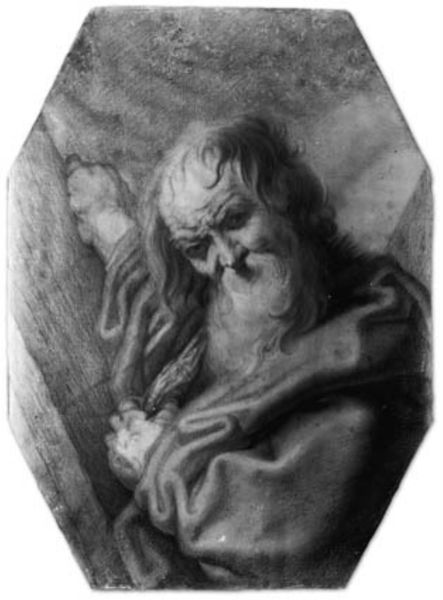
painting, oil-paint, canvas
#
portrait
#
face
#
baroque
#
portrait image
#
portrait
#
painting
#
oil-paint
#
close up portrait
#
canvas
#
male portrait
#
portrait reference
#
portrait head and shoulder
#
mid-section and head portrait
#
facial portrait
#
realism
#
digital portrait
Dimensions: 23 cm (height) x 18 cm (width) (Netto)
Editor: This is "En olding med baret," or "An Old Man with a Beret," painted between 1704 and 1765 by Johann Salomon Wahl. It's an oil painting on canvas. The portrait's striking, but quite dark... almost melancholic. What can you tell me about it? Curator: It's interesting to consider the materiality of this piece. The artist's choice of oil paint on canvas, a fairly standard practice at the time, speaks volumes about the economics of artistic production. This wasn't fresco, a public art form involving laborers. This was commissioned and privately owned, an easily transported status symbol. Look at the visible craquelure – the fine network of cracks in the paint surface. This aging doesn’t just show the passage of time but reveals the physical properties and limitations inherent in the materials themselves, wouldn't you agree? Editor: I do! It’s like the material is actively pushing back against time. Does the sitter’s clothing or ornamentation contribute to this kind of reading? Curator: Absolutely. The dark clothing, combined with what appears to be a chain and medallion, hints at a specific social position and patronage network. Can we decipher the socio-economic status based on the apparent value and quality of his garments and adornments? Was this portrait intended to solidify his place in society or broadcast his economic position, and what labour went into procuring each individual piece of clothing? These questions are crucial to understanding the work's full significance. Editor: So, by focusing on the materials and social context, we can move beyond just aesthetic appreciation? Curator: Precisely. It compels us to examine art not as an isolated object of beauty, but as a product of its time, shaped by labor, consumption, and the very tangible properties of the stuff it's made from. The social environment surrounding the creation and usage is a vital aspect of this work. Editor: That’s a very thought-provoking way to look at portraiture! I’ll never see these pieces the same way again. Curator: Good. Always consider the hand behind the brush, the sources of the pigment, and the world that gave rise to the canvas itself.
Comments
No comments
Be the first to comment and join the conversation on the ultimate creative platform.
